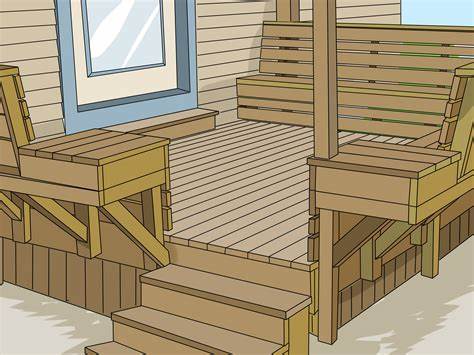
Constructing a deck is a widely embraced do-it-yourself (DIY) project, appealing to individuals ranging from seasoned professionals to weekend enthusiasts. The desire for an ideal outdoor relaxation space during warm weather motivates many to embark on such endeavors. However, the process entails substantial effort, spanning from meticulous planning to the application of finishing touches. As the old saying goes, “the devil’s in the details,” emphasizing the need for precision in positioning joists, ensuring uniform spacing of railings, and attending to other critical aspects.
The inclusion of deck stairs depends on the specific type of deck under construction, an aspect not delved into within this discussion. Nevertheless, should the need for deck stairs arise, the same meticulous attention to detail applies.
Streamlining Deck Joist Installation
This paper presents six valuable tips for constructing decks, with a focus on achieving meticulous precision throughout the process. The first tip advocates for simplifying deck joist hanging, particularly when working alone. A practical approach involves attaching joist hangers to the ledger board before joist installation, ensuring proper alignment and height. To facilitate this process, a custom jig is recommended, constructed from a 5 x 12-inch plywood piece and a 2×4 of matching joist width. The jig is affixed to the ledger, securing the joist hanger in place with galvanized nails. Attention to the average width of joists is crucial, allowing for adjustments as needed, such as notching or shimming to accommodate variations. These tips collectively contribute to achieving precise and well-constructed decks.
Precision Techniques in Deck Construction: Notching and Baluster Spacing Strategies
Achieving accuracy in deck construction involves employing meticulous techniques for tasks such as cutting notches around deck posts and spacing deck balusters. This paper explores two key strategies for enhancing precision in these aspects of deck building.
Cutting Accurate Notches
To achieve the most accurate notches around a deck post, it is recommended to tightly hold the deck board against the post and transfer the post’s location to the board using a combination square. The depth of the notch should be measured and marked with precision. Careful attention is required when measuring the depth, as posts may exhibit twists, leading to unequal measurements on either side. The notches can be precisely cut using a jigsaw, ensuring a seamless fit.
Spacing Deck Balusters with a Jig
The use of jigs is favored by carpenters for its efficiency in simplifying and expediting tasks. A practical jig designed for constructing deck railings facilitates the centering of balusters on 3-1/2 in. wide rails and maintains a consistent spacing of typically 4 in. or less between them. When attaching balusters, it is advisable to start from the center, ensuring that the remaining space on each end is equal. To optimize the overall length, careful measurement in advance is essential. Commencing with a baluster in the exact center or with an opening centered is recommended, depending on which approach brings the space between the last baluster and the post closest to the desired 4-inch maximum baluster opening. These strategies collectively contribute to the precision and efficiency of deck construction.
Enhancing Aesthetic and Structural Precision in Deck Construction: Strategies for Straightening, Trimming, and Crafting Post Caps
This paper delves into critical techniques for achieving precision and aesthetic appeal in deck construction, specifically focusing on straightening bowed deck boards, trimming deck boards for optimal straightness, and crafting beveled post caps.
Straightening Bowed Deck Boards
Addressing inherent bowing in deck boards is a customary aspect of deck construction. To rectify this, the recommended approach involves setting the board with the bow inward, nailing one end, and systematically leveraging a chisel into the joist as the board is secured to maintain alignment with spacers. This ensures a tight and secure fit between the deck board and the joist.
Trimming Deck Boards Perfectly Straight
Achieving flawless edges on trimmed decking is imperative for the overall aesthetic. Employing a guide board screwed onto the decking facilitates a crisper edge than manual trimming. To ensure precision, a straight board is secured as a guide for the circular saw, aligning the saw plate parallel to the decking and maintaining a tight relationship with the guide. Use of a 2×2 requires careful sight alignment to guarantee straightness, and for the last two boards, a chalk line aids in maintaining a straight, steady motion during freehand cutting.
Crafting a Beveled Post Cap
Adding a cap to rail posts not only enhances the deck’s visual appeal but also protects the vulnerable end grain from environmental elements. While caps for 6x6s may necessitate special ordering, this paper proposes a cost-effective solution by crafting custom caps from 2×10 material. A jig, constructed from 16-inch pieces of 2×8 framing and 1/2-inch plywood, guides the circular saw in creating beveled post caps. The adjustment of the plywood guide requires precision to achieve a slight reveal on the cap’s top. Securing the cap to the posts is accomplished with construction adhesive and 3-inch galvanized finish nails, providing both structural integrity and aesthetic enhancement.